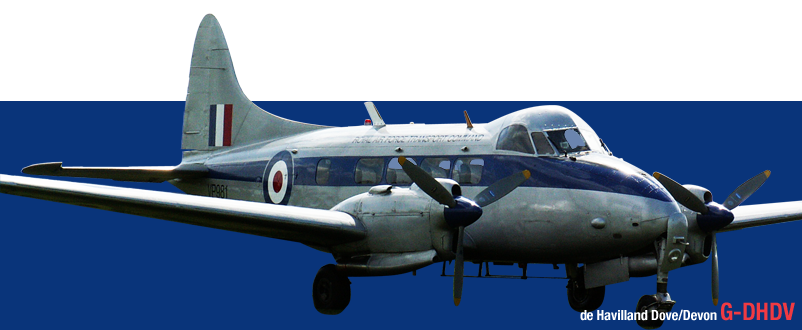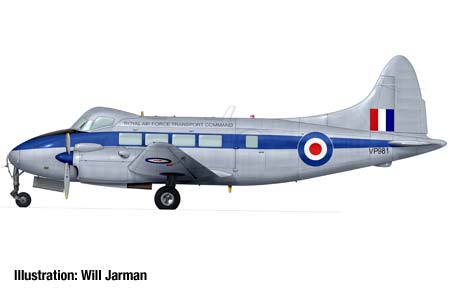
G-AMSV Returns to Coventry
An old friend returned to Coventry yesterday when G-AMSV, in her striking Indian Air force livery, landed here for extensive maintenance by our engineers. Sierra Victor was part of the Air Altantique fleet here for many years. She'll...
Baginton Air Pageant
The initial details for the Baginton Air Pageant are up on the website! As we don't have the space for a full-on air show attracting 20,000 or so people, we're aiming for low-key, themed days like this. A couple of thousand people,...
Newquay Pleasure flights
We promised we'd be back to fly in Cornwall, and here we are. We'll be heading south with a Rapide and Chipmunk to spend a week at Newquay from 25th July, with a further visit planned in August. The flights are bookable in the normal...
New Dakota Book
Geoff Jones just told me that his new book on the DC-3, released to celebrate the 80th anniversary of the Dak's appearance, is now available. The cover sports a lovely shot of G-ANAF, shot by Simon Westwood before her radome goiter was...
Nimrod Engine Run
We've just confirmed plans by NPT to run all four of the Nimrod's Rolls-Royce Speys on Saturday 9th May. We expect the thunder to start just after lunchtime. Come along and enjoy some audio power - and please dip into your pockets...


Comparing this sleek, modern-looking aircraft with the Rapide it's hard to believe that they were manufactured effectively side by side. Although the Dove was designed to replace the Dragon Rapide, the success and popularity of the biplane meant that the older design continued in production alongside the ground-breaking modernity of the all-metal monoplane. This was in the final months of World War 2, so the easier sourcing of wood and fabric for the Rapide against the relative scarcity of aluminium would also have played a part.
Designed in 1945, and flying for the first time on September 25 of that year, the Dove entered service the following year as a short-haul feeder airliner for domestic transport. The Ministry of Defence ordered the aircraft, re-christening it the Devon, as a military transport and communications aircraft.
It's a comfortable aircraft inside, with roomy seats and large windows. But there's a surprise for passengers that reminds us that this is a design with its roots in an earlier era. The main wing spar passes right through the cabin, creating a two-foot high step two-thirds of the way up the gangway.
The Dove/Devon was exceptionally successful, proving reliable and economical in service, and it became one of the best-selling British aircraft of the 1950s with 527 eventually being produced, including 127 built for the RAF as deHavilland Devons. The last new aircraft was delivered in 1967.
The success of the Dove gave birth to a lengthened, four-engined variant, the de Havilland Heron. This had mixed success, partly because early versions were fitted with fixed undercarriage, almost completely cancelling out the performance advantage of the extra engines. There's a rare example of this undeniably pretty aircraft under restoration at our Coventry maintenance base.


